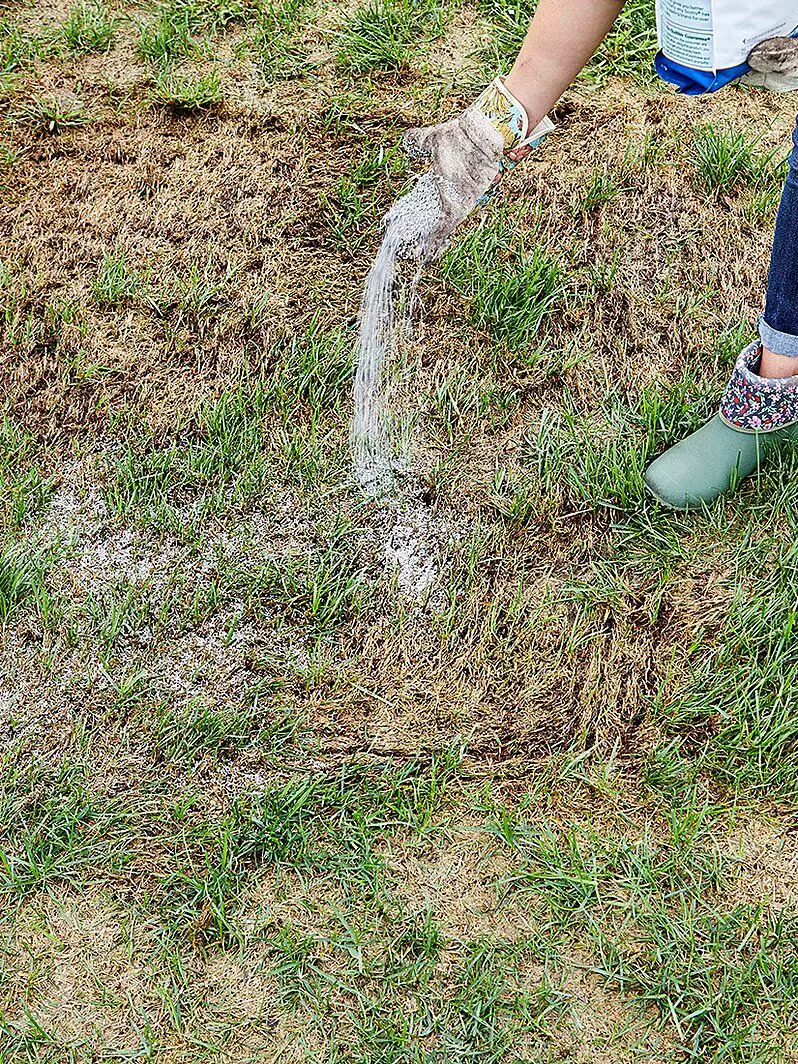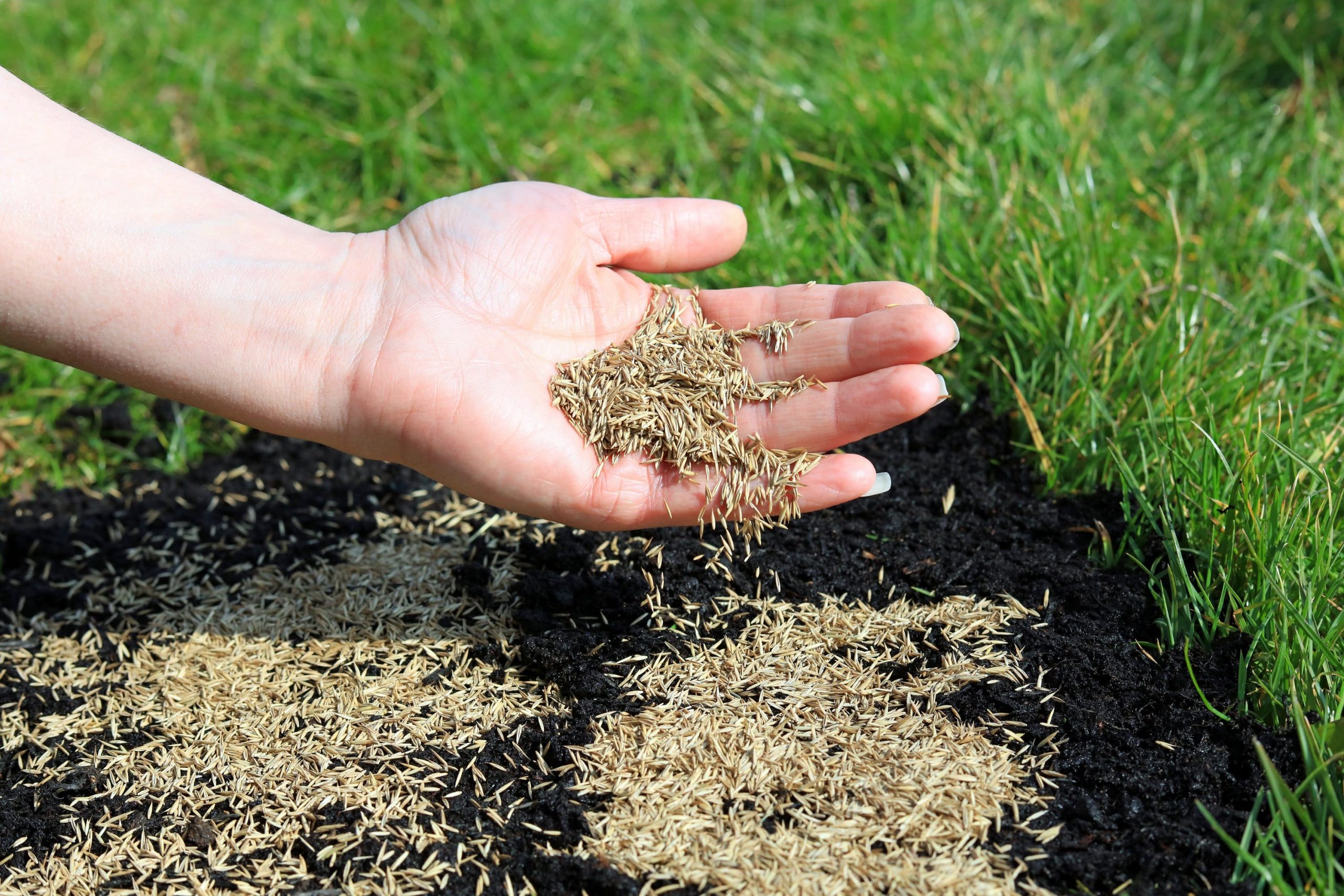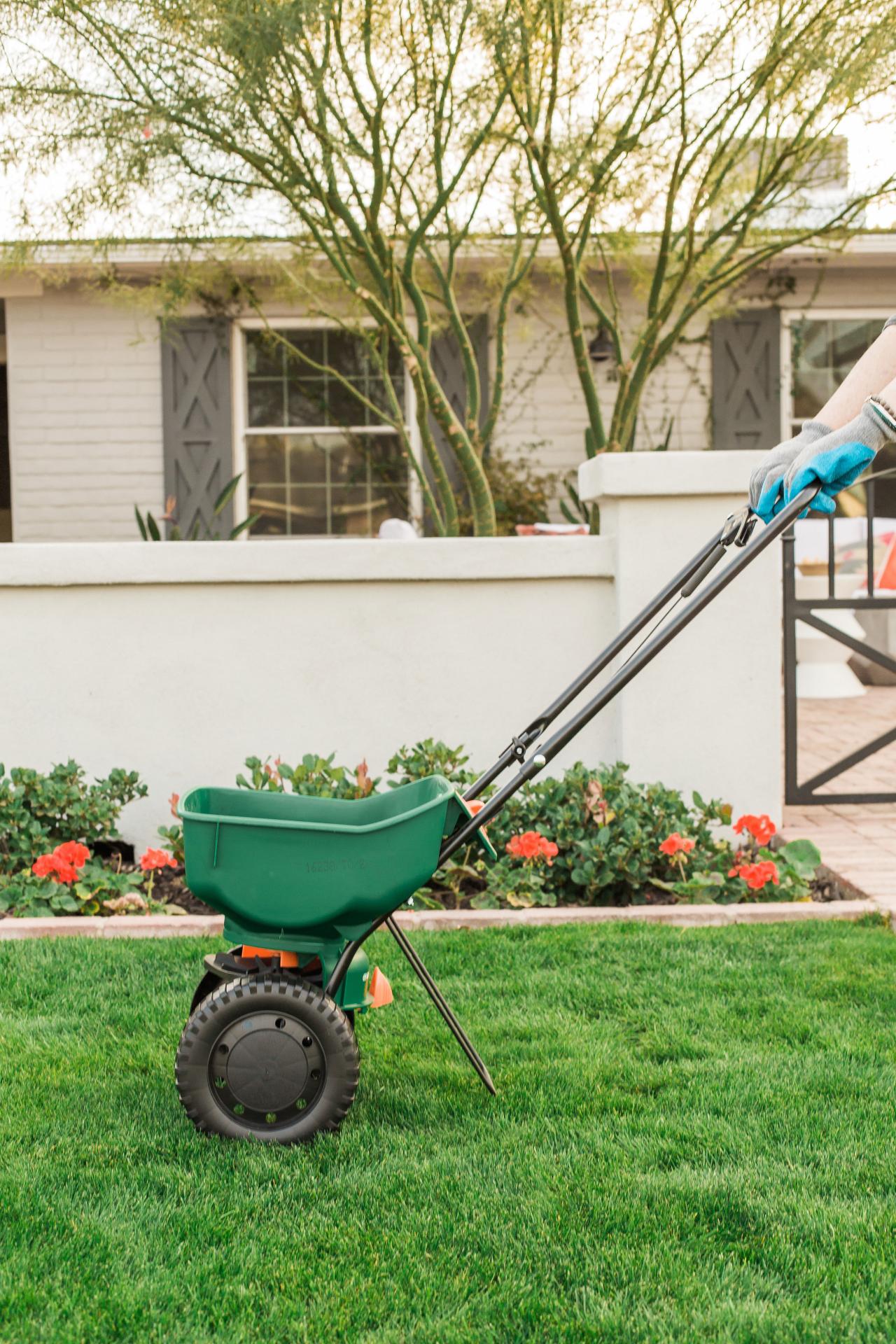When Is A Good Time To Seed My Lawn
Keep the area moist and remove the straw when the seeds begin to germinate. When the soil and seeds dry out, the seeds die. The best time to plant lawns is from mid-April to mid-May in the spring and from mid-August to mid-September in the fall. The further away from this moment, the faster the grass will grow.
When Is The Best Time To Fertilize My Lawn In Illinois
After calculating the amount of the application, the time of filing is another important decision. Early fall is an important time to fertilize northern Illinois lawns. The calendar below indicates when you should apply, based on the number of applications you need per year and the quality of the desired grass.
How To Overseed A Lawn
This article was co-authored by Jeremy Yamaguchi. Jeremy Yamaguchi is a Lawn Care Specialist and the Founder/CEO of Lawn Love, a digital marketplace for lawn care and gardening services. Jeremy provides instant satellite quotes and can coordinate service from a smartphone or web browser. The company has raised funding from notable investors like Y Combinator, Joe Montana, Alexis Ohanian, Barbara Corcoran and others.wikiHow marks an article as reader-approved once it receives enough positive feedback. In this case, 94% of readers who voted found the article helpful, earning it our reader-approved status. This article has been viewed 698,510 times.
Overseeding is one of the most important tasks involved in growing a healthy, lush lawn. While fertilizing your lawn is important, grass plants slow down their rates of reproduction after a few years. Over time, lawns that have not been overseeded will grow thin and unhealthy, making it much easier for weeds to overtake the lawn. Overseeding can be time-consuming if you have a large lawn, but it is not difficult, and the results are well worth it the effort.
Also Check: How To Make Lines In Grass With Push Mower
Is Peat Moss The Same As Sphagnum Moss
Though the terms are often used interchangeably, peat and sphagnum moss arent the same thing.
While its true peat moss is a member of the Sphagnum genus of mosses, the term peat moss actually refers to various types of dead and decayed sphagnum moss which have been saturated and submerged in water for an extended period.
On the other hand, Sphagnum moss is still alive and has slightly different uses than peat moss.
Theyre parts of the same plant, just at different stages of growth!
Dont be too surprised, though, if you see peat moss labeled as sphagnum peat moss, as again the two terms are often confused.
Get The Timing Right: When To Seed

For cool-season grass seeds, either spring or fall are the preferred times, since these northern varieties of grass prefer warm soil and cool air.
In the South, warm-season grasses can be planted from late spring to mid-summer. Wait until the last chance of a late frost has passed, and the daytime temperature is in the 80s.
Read Also: Lawn Mowing Simulator Mount Codes
Best Grass Seeds For Southern States
People living in Southern states should select a warm-season grass seed. But the variety of seed will depend on what part of the country you are in.
In the warm, humid Southeast and Gulf Coast states, the favorite seed varieties are:
- Bahiagrass seed. Coarser than any Northern grass, but it grows thick and dense and is tolerant of both heat and drought.
- Bermuda grass seed. This is a hardy but needy grass, which requires high maintenance but stands up well to heavy traffic.
- Buffalograss seed. This warm-season grass seed is the only variety native to North America, so it doesnt need much help to thrive. It is highly drought tolerant and needs little care.
- Centipede grass seed. This grass is slow to grow, but very low in maintenance once established. In climates that stay warm, it has virtually no dormant season, so it stays green year-round unless theres a cold snap.
- Zoysia grass seed. A slow grower, but one of the most cold-tolerant varieties of warm-season grasses.
Another common turfgrass choice in the Deep South, St. Augustine grass, is not commercially sold as seed, since its seedheads are sterile. It is a grass planted from sod.
Federal Seed Act Guarantees Accurate Labeling
When it comes to selecting seeds, you have an ally the Federal Seed Act. First enacted in 1939 and amended five times since, the Seed Act requires seed sellers to provide consumers with valuable information on the seeds labels.
Under the law, the label must tell you:
- The name of the grass variety .
- Its purity, that is, the weight by percentage of each type of seed.
- Germination percentage. The percentage of the seeds that you can expect to germinate. This is not a number the seed companies can fudge. The federal government expects seed producers to run regular germination tests and keep careful records.
- Weed seed percentage. Look for a seed that has less than 0.5 percent weeds.
Recommended Reading: How To Bid Lawn Care Jobs
Three: Watering And Maintenance
Watering is one of the most important aspects of successful overseeding. You need to water the seeds into your lawn immediately after spreading, and continue to water daily until the seeds germinate, which can take up to two weeks. The first watering should be a heavy watering . After that, your watering can be lighter. Once the grass has germinated, be sure to water every few days giving the grass a good deep soaking. When the grass is fully established and the same height as the existing lawn, water it according to the instructions for that type of grass. While the new grass is getting established, try to limit activity on the lawn and avoid mowing as long as possible. Once the grass is the same height as the existing lawn, you can continue to mow as you normally would.
How To Dormant Seed Your Lawn
Missed the pre-frost window to establish new grass from seed?
You still can prep your lawn for spring once the soil cools down. Overseeding your lawn is one of the best ways to prevent weeds and improve grass coverage.
Putting seed down after fall warmth is over gives the seed a chance to move into the soil layers, where they will rest until spring. The seed will sprout in the spring when ground temperatures are great for germination, and soil microorganisms are actively delivering nutrients to young seedlings.
Also Check: How To Dispose Of A Riding Lawn Mower
Choose The Right Grass Seed
If you’re planning to seed your new lawn, the decision on seed variety is important. A great lawn can only be grown from great grass seeds and IFA selects the best performing cool-season turf varieties for the Intermountain West.
IFA GreenStar 5
Contains five premium Kentucky Bluegrass varieties. Withstands high stress and wear, and provides a beautiful, dark green lawn.
IFA Quick Green
A turf-type Tall Fescue blend that’s heat and drought-tolerant. Excellent resistance to disease and pests.*
IFA Liberty Fescue Bluegrass Mix
Hardy with a longer growing season.*
* Liberty and Escalante are both great choices if you live in an especially hot area where irrigation can sometimes be infrequent.
S To Plant A New Lawn Successfully
Planting a new lawn is a big job it may be best to tackle the project in sections. You can begin this process by redoing the worst or most visible lawn areas, and then make plans to tackle the remaining areas the following year.
Starting with smaller sections instead of the entire lawn keeps the job manageable and makes the critical step of watering feasible for homeowners who do not have in-ground sprinkler systems. However, whether you plant a new lawn in stages or all at once, you will need to take the following steps:
Recommended Reading: True Green Prices
Is Your Lawn Ready For Fall And Winter Lawn Care
While a do-it-yourself approach is always available, a lawn care professional can be successful this season and can be followed by many others without trial and error. Best practices have shown that fall is the best time to fertilize your lawn. This means you need to take steps to prepare your lawn for fall and winter.
How To Plant Your Own Lawn

Using the right techniques and tools to plant your lawn will give you a full, healthy lawn with no bare spots. Properly preparing the soil in your lawn before planting ensures that your grass seeds can readily form a strong root system. Choosing the right time of year to seed your lawn is also an important factor in the success of a newly planted lawn. The best time to seed your lawn depends on the type of grass you are using.
1
Remove any rocks or debris from the surface of the soil in the area you are going to plant. Use your dirt rake to loosen the surface of the soil and smooth it over, removing any small depressions that could impede drainage. Break up any dirt clods on the surface using the tines of your rake.
2
Measure the area you are going to seed using your measuring tape. Measure out the amount of grass seed you will need to cover your working area based on the pounds per square foot listed on the bag. Divide the grass seed into two equal piles.
3
Load half of the seed into your broadcast spreader and move to one corner of your working area. Pick one side of the planting area and walk parallel to it, dispensing seed over the ground as you move. Once you reach the end of the first row begin walking back towards where you started on a second row parallel and adjacent to the first.
4
5
6
References
You May Like: Peat Moss For Lawn
What Times Of The Year Should You Fertilize Your Lawn In Michigan
The beginning of the growing season for your plants is in early spring. You should now apply spring fertilizer in Michigan when your lawn needs it most. Weather permitting, this season will likely take place from February to April.
New grass fertilizerWhat types of fertilizer are best on grass?Scott’s Lawn Builder Scott’s Lawn Builder is probably the best lawn fertilizer on your list. Suitable for all types of lawns/meadows.MiracleGro Water Soluble Lawn Fertilizer This fertilizer is safe for all types of lawns and can be applied at any time during your lawn’s growing season.GreenView lawn fertilizerWhat is the best fertilizer for s
Take Care Of Your Growing Lawn
Depending on the temperature and seed variety, germination can start as early as 5 days but may take as long as 1530 days. After your grass has germinated, start backing off on the watering frequency and gradually increase the watering amount each time.
As your lawn grows, water ½” to 1″ every three days during hot weather. Sandy soils will need more frequent watering, while clay types will require less.
Apply IFA Step 3 Spring & Summer Fertilizer 30 days after most of the seed has germinated. Young seedlings have a hefty appetite. IFA Step 3 will keep the lawn from “stalling” and its slow-release nitrogen will feed its growth for weeks to come.
When the grass has reached a height of 3 to 4 inches, it’s time to mow and let the kids run free. After the first mowing, trim your lawn between 1½ to 3 inches . Avoid applying any weed killers to your new lawn until after the third mowing.
Follow these steps and you’ll have a beautiful lawn to enjoy for years to come.
Read Also: Spray To Get Rid Of Gnats
When Should I Fertilize My Lawn
How and when to fertilize a new lawn? Fertilize in early fall with a regular lawn fertilizer, such as 21714 or 32816, from late August through late September, depending on location. Fertilize your lawn in mid to late fall with overwintering fertilizer anytime from mid-October to late November, depending on latitude.
How To Seed A Lawn By Letting The Grass Grow
Related Articles
Although it’s more common to buy a bag of grass seed to spread on bare spots in your lawn, it’s possible to grow more grass by letting the existing grass develop seeds. The main thing you must do is stop mowing and let the blades mature so the seed heads can develop at the top. This may be unsightly for a while as the grass gets tall, but it’s one way to ensure you fill in your lawn with the same type of grass.
Rake your lawn with a steel rake to loosen or remove some of the thatch layer. Seeds need to come in contact with dirt to grow properly. Raking may dislodge some of the seeds if you wait until the seed heads develop, so rake while the grass is still short. You won’t notice a significant amount of thatch reoccurring if you’re not mowing.
Let your grass grow long and tall until small, oval-shaped seed heads develop on the tips. This could take one to two months, depending on the type of grass in your lawn.
Allow the grass to grow for at least a month after seed heads develop. Most grasses need time for the seeds to germinate inside the seed heads before they become viable.
Rake your yard with a garden rake with long, flexible tines to make sure all the seeds fall between the existing blades of grass instead of sitting on top. This helps overseed the lawn and fill in bald spots.
Water your lawn for about an hour immediately after you rake.
Things You Will Need
Recommended Reading: Average Trugreen Cost
How To Save Money When Planting New Grass
Though buying and planting grass seed can be an expensive affair, there are things you can do to save money. Instead of breaking your budget, follow these four simple guidelines:
- Buy your grass seed in bulk. Like we said above, buying all your grass seed at once will be much more cost-effective in the long run. Its the better option if you can handle the high initial cost. Just be sure you need to use the majority of it, so it doesnt expire.
- Choose the right grass type. The last thing you want to do is buy and plant your grass seed only to realize it wont grow properly. Do your research and find the best grass variety for your region.
- Plant your own grass. Instead of paying for contractors to plant your grass seed, consider tackling the project yourself. With the research and manual power on your side, you should be able to get the job done on your own and cut out those labor costs.
- Regularly maintain your lawn. The best way to save money in general is simply to take care of your lawn. Dont wait until its too late. Do whatever your type of grass needs to survive and tackle problems as soon as they arise.
Stimulate Growth With A Seed Starter Fertilizer
When the area is graded and level, apply a seed starter fertilizer to help stimulate new seedling growth and development.
TIP: Apply IFA Premium Garden Fertilizer or IFA Grand Champion All-Purpose Fertilizer . Both fertilizers are high in phosphate and will encourage rapid root development. Also, consider adding IFA Bountiful Earth Humate to enrich the soil even further and aid seed germination.
Recommended Reading: Scotts Disease Ex Vs Bayer
Roll For Good Seed To Soil Contact
After seeding, fill a lawn roller halfway with water and roll it over the entire seeded area. Roll the perimeter first and finish in the middle. Pressing the seeds into the soil ensures excellent seed to soil contact. It helps increase germination rates and, in general, adds to your chance for successful planting.
Spreading And Nurturing The Seed

Also Check: Cost Of Getting Lawn Mowed
S To Overseed In Late Fall
Wait until the ground is cool enough to prevent germination .If your local garden stores are not carrying seed through the late fall and winter, many will gladly order it for you.
The seeds need good contact with soil, so youll want to pull aside leaves, cut your dormant grass low, and scratch the soil surface, aerate, or seed slice before adding seed. This ensures grass seed can touch soil and fall deeper into the soil with freeze/thaw cycles. Any grass clippings or leaves you pulled aside to prep the soil for seeding should ideally be pulled back across the surface, and mowed into smaller pieces so they can naturally fertilize the lawn.
In spring, youll have a new flush of grass growth, and can fill in small areas where dormant seeding did not succeed!
